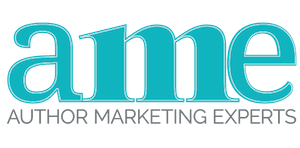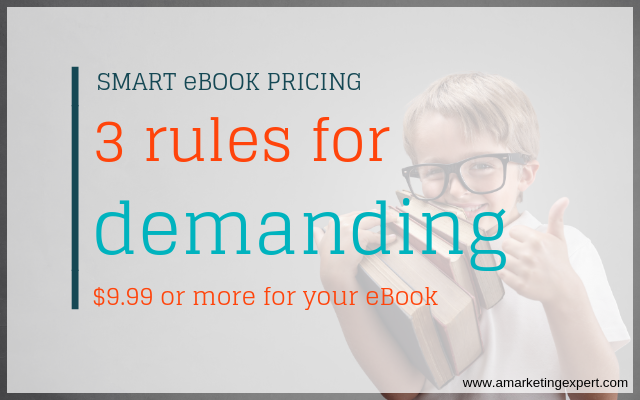I just returned an eBook to Amazon. I don’t normally do this. In fact being in the industry I hate returning books – period, but I did in this case and I’ll tell you why: the book was over $15. And when it comes to eBook pricing, if you’re going to charge that much, the author better deliver the goods.
I heard about this book on a popular podcast: the interview was great, the author sounded awesome. I literally never spend more than $10 on an eBook; that’s my limit, but I made an exception in this case and it taught me an important eBook pricing lesson that I thought would be good to share.
First off, it’s no secret that Amazon lets you return eBooks within 7 days of buying them. In this case, I hadn’t read the book right away – I had bought it almost a month ago, but I wrote them and stated my case. I said that, flat out, the book did not live up to the expectation of the book description. Maybe it would at some point. There’s a chance that if I had “stuck with it” it might have. The problem is, most readers don’t “stick with it” – we get bored, we get upset that we spent our money, and, in some cases, we ask for a refund.
Book pricing, and in particular, eBook pricing has become somewhat of a challenge for most authors. We want to “make back our investment” in the book. I get that. But it’s a faulty book marketing tactic to price a book too high for the market. In some cases, in can’t be helped. In this case, the author was at the mercy of her publisher – who often overprice their eBooks. But in many situations, authors do this just because they can. Or because someone told them that pricing an eBook over $10 was a solid book marketing strategy for bigger book sales.
In some situations, this is true. But in the majority of cases, it’s not. The difference between a solid eBook pricing strategy and one that’s going to get you clicks, and not buys, is dependent on just three things.
Let’s explore them below, and when you’re done, consider contacting me if you’re an author with a higher priced eBook, I’d be happy to chat about ways we can collaborate that will help you get the exposure you need, while convincing readers to overcome the sticker shock and click buy.
- Quality of the book: Consumers are price sensitive, there’s no doubt about it. Even in a robust economy, we still like a good deal. So if you’re asking for $15 of my hard earned dollars (or whatever your eBook pricing is above $9.99) this book had better be the best book in its market. The best. Period. End of story. (no pun intended) The reason is because the competition is fierce out there, very fierce and pricing can often make or break the success of a book. So if you’re going to do this, you’d better get the reader hooked on the book right away. Hit them in the face with your smarts and your content. And while I never suggest that you publish a bad, poorly edited book, in the case of an ebook priced above $9.99, you absolutely can not wave a subpar book at a reader, ask top dollar for the eBook, and not expect to upset someone, or get a bunch of returns. Sometimes, in really unfortunate cases, you wind up with a lot of both.
- Know Your Audience: The other piece of this is the reader you are trying to target. (See this article on reader profiles to learn more, and download my free reader profile worksheet.) In this case, the book I returned was a business book. Studies have shown that business book readers rarely finish the books they buy, often getting through “enough” content, or just flat out get bored by the time they hit chapter three. Ingram/Spark did a great study on this for IBPA’s conference last year. They found that readers of fiction tend to finish books faster – some in a week, but business readers take their time, they are a harder sell. They require more from their books. Not that fiction authors want to read bad books, but different markets have different requirements. Your eBook pricing should be in accordance with market demands. While it’s fun to be an outlier and do things “different,” it’s hard to do this if you’re a new author, have little to no platform, or are weak on book marketing, which we’ll talk about in this article, too.
- You have other books: I would never, ever recommend an eBook pricing strategy of over $9.99 if this is your first book. In fact, I was teaching a class this past year at a writers conference and when I got to pricing strategy someone in the audience popped up and said she had just paid $15 for a fiction eBook – the caveat being that this was the fifth book in a series, she’d waited a long time to get it, the author had tons of credibility, lots of fan love. If this is you, then feel free to price your eBook higher. You’ve earned the ability to do so. But for most of us, with smaller fan bases, or in some cases none at all, it becomes increasingly more difficult. I’m not saying that your book isn’t worth being priced higher, it probably is. The question is, do your readers know this?
Finally, and this is sort of a bonus point that’s a bit twofold. First off, the higher you price your book, the harder you need to promote it. There are a number of factoids out there in the marketplace on this. The higher the book price, the more marketing it requires to get it out there. So price your book according to the market it serves – meaning, find what seems to be a happy medium in your market and situate your eBook pricing somewhere in that space.
If your goal is to be able to price your eBook higher, over $9.99 and that fits well within your market, keep in mind that this goal may take a bit of time. I’m not discouraging it, by any means. But remember that once you burn through a reader’s trust, it’s hard to get it back. In this case, I got through two long chapters (1&2) out of a book that was only 7 chapters long and decided it wasn’t worth it to continue – and I wasn’t wasting my money to keep it. But moreover, what an author loses in this case, is a fan. And a fan, as I’ve talked about a few times, can be book marketing gold and the key to selling more books to more readers.
I wouldn’t blast the author with a negative review, because I feel like maybe it’s just my experience with this book. I read a ton of books in this particular business genre, so maybe my take on it isn’t the same as someone else’s. I also don’t like leaving bad reviews, just for the sake of leaving a bad review. It’s a lot harder for the author to recover from that. But not everyone feels this way. Readers are vocal. They’ll tell you either with their voice or pocketbook where they stand. The key is: do your best to please both and keep the readers coming and sharing your work.
Tell me some of your eBook pricing successes as it relates to your book marketing in the comments! I’d really love to hear your experiences!
Did this post help you? I’ve made it easy for you to share with these tweets below!
Click to Tweet: These 3 ESSENTIAL eBook pricing rules will help you price your books to sell! via @bookgal #authortips #sellmorebooks
Click to Tweet: Take the bull by the horns: what you must do to sell eBooks at $9.99 or higher! @bookgal #authortips #sellmorebooks





0 Comments